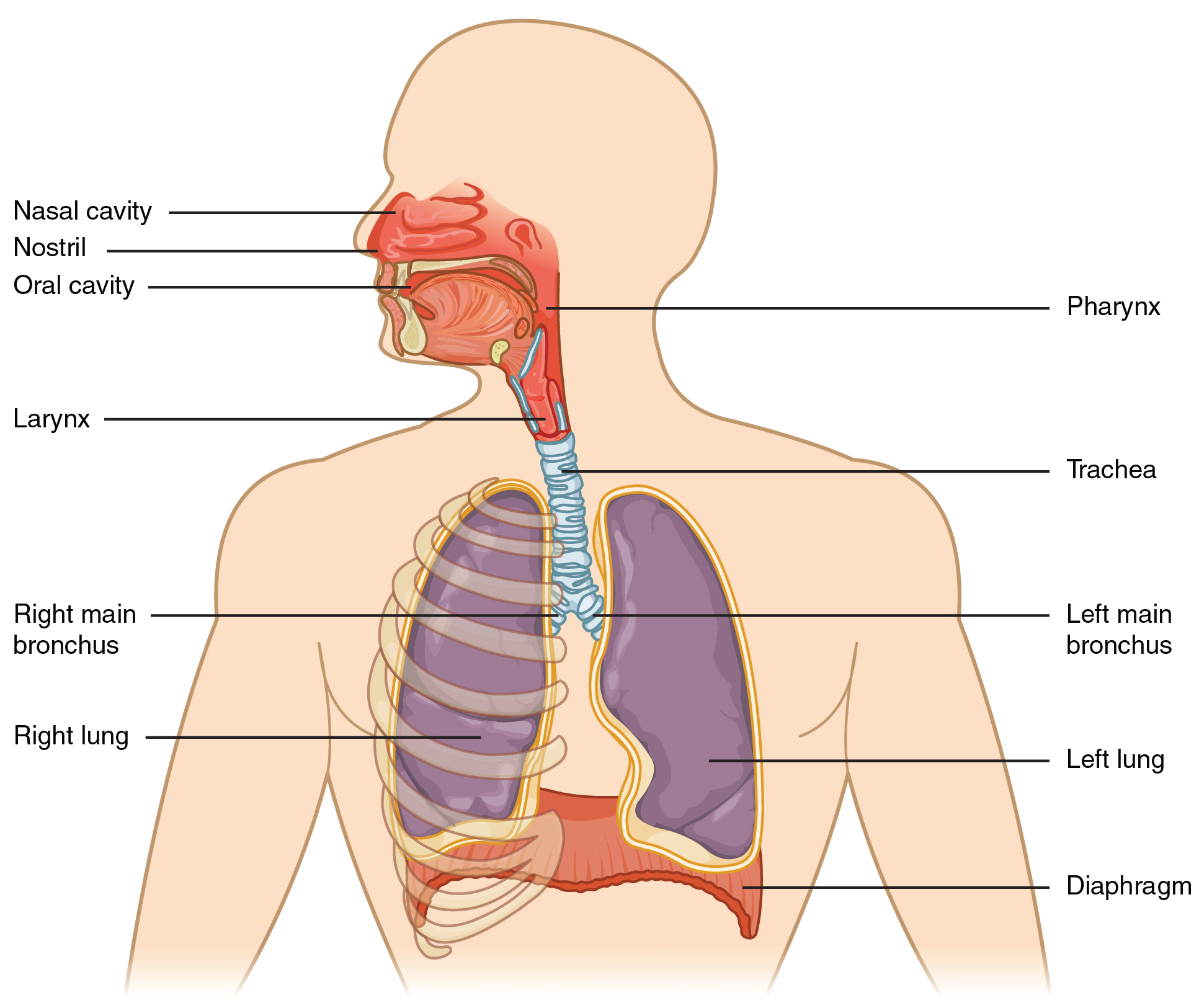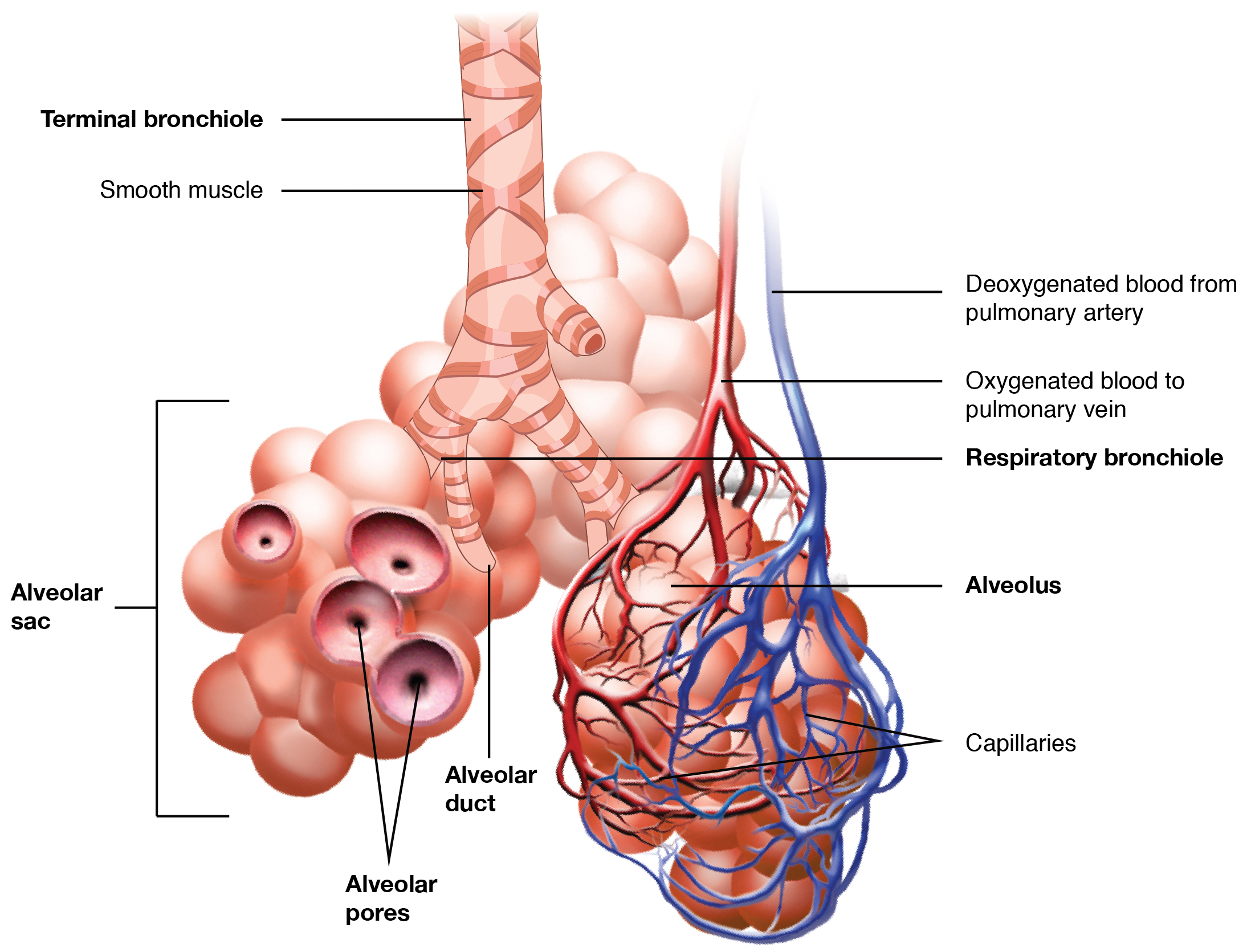Chapter 3 – Cardiorespiratory Fitness
Respiratory Anatomy
The major organs of the respiratory system function primarily to provide oxygen to body tissues for cellular respiration, remove the waste product carbon dioxide, and help to maintain the acid-base balance in the body. Portions of the respiratory system are also used for non-vital functions, such as sensing odors, speech production, and for straining, such as coughing or lifting heavy objects.

Functionally, the respiratory system can be divided into a conducting zone and a respiratory zone. The conducting zone of the respiratory system includes the organs and structures not directly involved in gas exchange. The gas exchange occurs in the respiratory zone.
Bronchial Tree
The trachea branches into the right and left primary bronchi to serve each lung. In each lung the bronchi continue to branch into bronchial a tree. A bronchial tree (or respiratory tree) is the collective term used for these multiple-branched bronchi that become smaller in diameter with each branching. The main function of the bronchi is to provide a passageway for air to move into and out of each lung. In addition, the mucous membrane traps debris and pathogens. Terminal bronchiole (the smallest branches) end in a grape-like grouping of air sacs known as alveoli.

Alveoli
An alveolar sac is a cluster of many individual alveoli that are responsible for gas exchange. An alveolus is approximately 200 μm in diameter with elastic walls that allow the alveolus to stretch during air intake, which greatly increases the surface area available for gas exchange.
Disfunction in the Respiratory System
Asthma is common condition that affects the lungs in both adults and children. Approximately 8.2 percent of adults (18.7 million) and 9.4 percent of children (7 million) in the United States suffer from asthma. Asthma is a chronic disease characterized by inflammation of the airway, and bronchospasms (constriction of the bronchioles), which can inhibit air from entering the lungs. In addition, excessive mucus secretion can occur, which further contributes to airway narrowing. An attack may be triggered by environmental factors such as dust, pollen, pet hair, or dander, changes in the weather, mold, tobacco smoke, and respiratory infections, or by exercise and stress.
Symptoms of an asthma attack involve coughing, shortness of breath, wheezing, and tightness of the chest. Symptoms of a severe asthma attack that requires immediate medical attention would include difficulty breathing that results in blue lips or face, confusion, drowsiness, a rapid pulse, sweating, and severe anxiety. The severity of the condition, frequency of attacks, and identified triggers influence the type of medication that an individual may require. Longer-term treatments are used for those with more severe asthma. Short-term, fast-acting drugs that are used to treat an asthma attack are typically administered via an inhaler.

